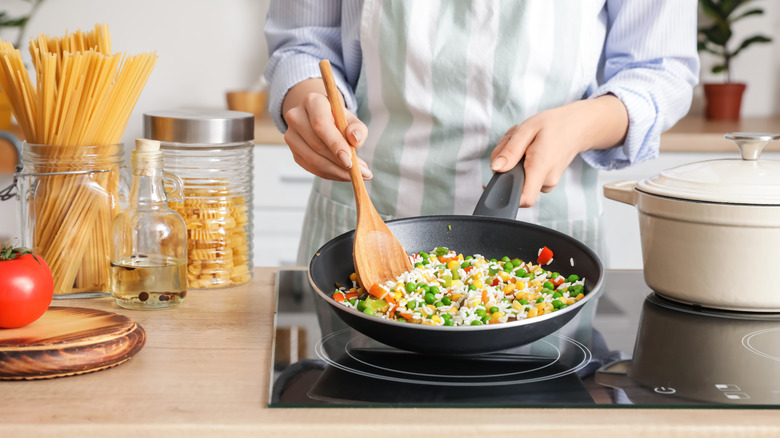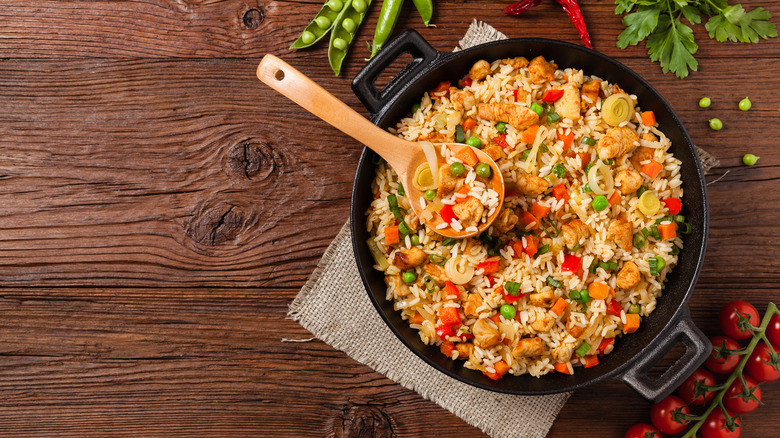Why It's Best To Make Fried Rice In Smaller Batches
A staple of Chinese restaurants all over, fried rice is also something you can make at home. One of the benefits of making your own fried rice is that you can customize it how you want. It's also a great way to clear out leftover food in your fridge — after all, no one likes to waste perfectly good food, and with fried rice, you can give those leftover veggies or protein a tasty makeover, though you're certainly not limited to only using leftovers. Just don't go too crazy with too many add-ins, since the star of your fried rice is the rice, after all.
Assuming you don't have access to an industrial burner like the kind found in just about every Chinese restaurant, you'll want to cook your fried rice in batches — J. Kenji Lopez-Alt (via Serious Eats) recommends not adding more than a cup at a time to cook. You need high heat to ensure that each grain of rice actually fries instead of steaming, which will just lead to a mushy mess. Home kitchen burners just don't get hot enough to accommodate a lot of rice, so it's best to cook in batches instead.
Other fried rice cooking tips
Of course, it takes more than simply cooking in smaller batches to make good fried rice. There are a few other key elements. The first is to use rice that is dry enough. While most recipes will recommend using leftover rice for fried rice, you can get away with using freshly cooked rice as long as you let it dry out a bit — try spreading the rice out on a pan to let it cool off, either on its own, in the fridge or freezer, or under a fan.
Sprinkle a dash of cornstarch on your rice and break up any clumps before you start frying your rice. You want to use a wok if possible. If not, a cast iron pan or heavy non-stick pan will also work, especially if you're using an electric or induction range. Make sure your wok or pan is hot enough before you add the oil, which should be one with a high smoke point. Add your rice and other ingredients in batches, tossing frequently to cook, then combine everything in your wok or pan at the end just before serving.

